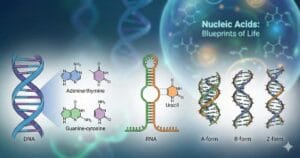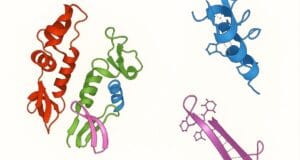
COMPETITIVE EXAM MCQs SERIES of ENVIRONMENTAL SCIENCE for UGC-NET/JRF, SLET, ARS, GATE, and other entrance tests – Statistical Approaches and Modelling in Environmental Sciences: Applied Statistical Distributions.
Syllabus Outline
- Discrete Probability Distributions (e.g., Binomial Distribution and Poisson Distribution).
- Continuous Probability Distributions (e.g., Normal Distribution, Log-normal Distribution, and Student’s t-Distribution)
- Chi-Square Distribution and F-Distribution.
- Distribution properties and parameters (mean, variance).
- Applications of statistical distribution in understanding pollutant levels, species counts, and environmental variability.
This quiz contains concept-based, most frequently asked 25 MCQs of “Statistical Approaches and Modelling in Environmental Sciences: Applied Statistical Distributions”. Each question has a single correct/most appropriate answer.
*****
1. In a binomial distribution representing the success rate of air quality monitoring stations detecting pollution events, if n=10 trials and p=0.3, what is the mean number of successful detections?
A) 3.0
B) 2.1
C) 10.0
D) 0.3
2. The normal distribution is characterised by two parameters that determine its shape and location.
A) Mean and standard deviation
B) Variance and skewness
C) Mode and median
D) Range and interquartile range
3. In environmental monitoring, which distribution is most appropriate for modelling the number of rare pollution events occurring in a fixed period?
A) Normal distribution
B) Binomial distribution
C) Poisson distribution
D) Chi-square distribution
4. The Student’s t-distribution is primarily used in environmental statistics when:
A) Sample size is large (n > 30)
B) Population variance is known
C) Sample size is small, and population variance is unknown
D) Data follows a skewed distribution
5. The log-normal distribution is particularly useful in environmental science for modelling:
A) Symmetric data only
B) Count data
C) Concentrations and particle sizes
D) Binary outcomes
6. The F-distribution is commonly used in environmental statistics for:
A) Testing equality of means
B) Testing equality of variances
C) Estimating population parameters
D) Modelling count data
7. In environmental quality assessment, the chi-square distribution is primarily used for:
A) Comparing observed and expected frequencies
B) Estimating population means
C) Modelling continuous variables
D) Testing correlation coefficients
8. The coefficient of variation for environmental data is calculated as:
A) Standard deviation / Mean
B) Variance / Mean
C) Mean / Standard deviation
D) Standard deviation / Variance
9. When environmental data exhibits right skewness (positive skew), which transformation is most commonly applied to achieve normality?
A) Square root transformation
B) Logarithmic transformation
C) Reciprocal transformation
D) Square transformation
10. When monitoring rare environmental events (λ < 5) using the Poisson distribution, which condition must be satisfied?
I – Events occur independently
II – Rate of occurrence is constant
III – Events cannot occur simultaneously
A) I only
B) I and II
C) II and III
D) I, II and III
11. In comparing the effectiveness of two water treatment methods, if the F-statistic for comparing variances is 2.45 with df₁=12 and df₂=15, this suggests:
A) The variances are significantly different at α=0.05
B) The means are significantly different
C) The treatment methods are equally effective
D) More data is needed for a conclusion
12. When modelling the distribution of particle sizes in atmospheric pollution, the log-normal distribution is preferred because:
A) Particle sizes cannot be negative
B) The distribution is typically right-skewed
C) Multiplicative processes govern particle formation
D) All of the above
13. In multivariate environmental analysis, when testing the equality of covariance matrices between k groups, the test statistic follows:
A) Chi-square distribution
B) F-distribution
C) Multivariate t-distribution
D) Wishart distribution
14. The likelihood ratio test for comparing nested environmental models follows which asymptotic distribution?
A) Normal distribution
B) Chi-square distribution
C) F-distribution
D) t-distribution
15. In extreme value analysis of environmental disasters, the Generalised Extreme Value distribution parameter ξ (shape parameter) determines:
A) The tail behaviour of the distribution
B) The location of the distribution
C) The scale/spread of the distribution
D) The skewness only
16. In analysing biodiversity indices across different ecosystems, the Dirichlet distribution serves as the conjugate prior for:
A) Normal likelihood
B) Multinomial likelihood
C) Poisson likelihood
D) Binomial likelihood
17. For environmental data exhibiting overdispersion (variance > mean), which distribution is most appropriate for count data?
A) Poisson distribution
B) Negative binomial distribution
C) Binomial distribution
D) Normal distribution
18. When modelling species abundance using zero-inflated Poisson regression, the excess zeros represent:
A) Sampling errors
B) True absence and sampling failure
C) Overdispersion
D) Measurement errors
19. In analysing spatial autocorrelation of pollution data, Moran’s I statistic follows which distribution under the null hypothesis?
A) Standard normal distribution
B) Chi-square distribution
C) t-distribution
D) F-distribution
20. Recent research on microplastic distribution in marine environments suggests that particle count data often exhibits a power-law distribution. This finding challenges the traditional use of which distribution for environmental particle modelling?
A) Normal distribution
B) Log-normal distribution
C) Poisson distribution
D) Exponential distribution
21. Assertion (A): The Poisson distribution is appropriate for modelling the number of species extinctions in a given period.
Reason (R): Extinction events are rare, independent, and occur at a constant average rate.
A) Both A and R are true, and R is the correct explanation of A
B) Both A and R are true, but R is not the correct explanation of A
C) A is true, but R is false
D) A is false, but R is true
22. Assertion (A): Log-normal distribution always has a longer right tail than left tail.
Reason (R): The logarithm of a log-normally distributed variable follows a normal distribution.
A) Both A and R are true, and R is the correct explanation of A
B) Both A and R are true, but R is not the correct explanation of A
C) A is true, but R is false
D) A is false, but R is true
23. Assertion (A): Chi-square distribution approaches normal distribution as degrees of freedom increase.
Reason (R): The mean of the chi-square distribution equals its degrees of freedom.
A) Both A and R are true, and R is the correct explanation of A
B) Both A and R are true, but R is not the correct explanation of A
C) A is true, but R is false
D) A is false, but R is true
24. Assumptions of the t-test in environmental statistics include:
I – Data follows normal distribution
II – Observations are independent
III – Population variance is known
IV – Sample size is large (n > 30)
A) I and II only
B) I, II, and III only
C) I, II, and IV only
D) All of the above
25. Applications of the F-distribution in environmental research include:
I – ANOVA for comparing multiple treatment means
II – Testing equality of variances
III – Model comparison in regression analysis
IV – Testing correlation coefficients
A) I and II only
B) I, II, and III only
C) II and III only
D) I, II, III, and IV
*****
Previous: Environmental Statistics and Sampling Theory
Next: Statistical Significance and Confidence Limits
References
- Gupta, S.P. (2020) Statistical Methods, Sultan Chand & Sons, 44th edition.
- Barnett, V. (2004) Environmental Statistics: Methods and Applications, Wiley, 1st edition.
- Manly, B.F.J. (2008) Statistics for Environmental Science and Management, Chapman and Hall/CRC, 2nd edition.

